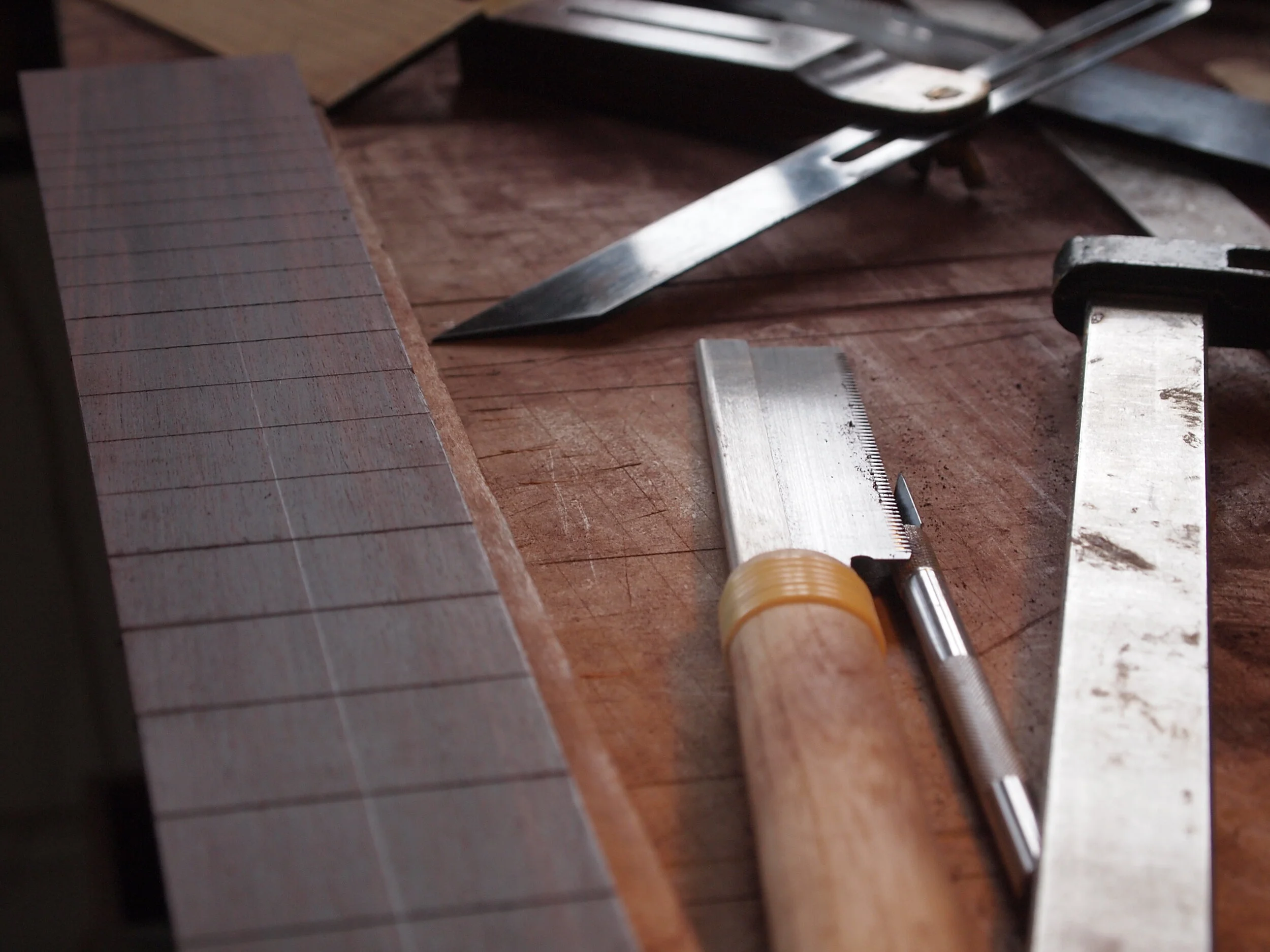This is quite a technical post. Recently, I showed another guitar maker one of my flamenco guitars, for feedback, and he asked me to write to him my method for gluing the golpeador. There are quite a few different methods.
A golpeador dries. In about 4 days this will be completely dry and transparent.
One method is to use a golpeador that you buy which is sticky on one side. I’ve always been too afraid to use this method as firstly they seem quite difficult to put on without leaving air bubbles. Secondly, once this kind of golpeaor is on, it’s really on and you can’t get them off again without damaging the french polish/lacquer below the golpeador. I’ve seen a few examples of golpeadors that have started to lift off, so they look untidy, and it would be better if they could be more easily replaced.
So the other option is to cut out your own golpeador from a sheet of suitable material, and glue it on. There are a variety of glues available which each have different advantages; epoxy, elmers, titebond. I’ve always used Elmers, as it is the most reversable option. When I needed to glue on my first golpeador, I did some looking around online and found the method with Elmers described by luthier Stephen Faulk, and discovered that luthier Lester Devoe uses the same method. The process below is that method but with more information based on my experience and various mistakes I’ve made.
I lightly sanded the underside of this golpeador and the surface of the finish below with 1200 (or 800 grit) to ensure a strong bond. However, for me this results in a slightly less transparent golpeador, and so I don’t tend to do it anymore.
There is also a choice to be made regarding the material used. I’ve used plastic sheets labelled as ‘acetate’ and also ‘PVC’. The usual thickness for a golpeador is between 0.010” and 0.015”. . I’ve used both and the former is on the verge of seeming too thin and that latter on the verge of seeming too thick. What is right depends on the flamenco player and I don’t think the thickness of the golpeador, within these bounds, affects the sound. Sometimes these plastic sheets are measured in microns; 0.010” is about 250 microns.
Another advantage to cutting out your own golpeador rather than buying one, is that you have more control over the shape. You can decide whether the golpeador goes over the rosette, partially covers it or not at all. Some flamenco players like the golpeador to extend further up towards the neck on the bass side. The golpe shape is very personal to the flamenco player.
Here are the notes I sent the luthier. For me, the method results in a crystal clear golpeador which can one day be replaced without damage to the finish below.
Cut out the desired golpe shape
Use 800 grade sandpaper on the edges to remove any burr along the edges.
It's not necessary to sand the underside of the golpe or to sand the finish under the golpe (if you do the resulting golpe is slightly less clear/transparent).
Get as much dust/lint off the gluing face of the golpe
Squirt on just enough elmers glue so that when the glue is spread the golpe will be covered (using too much is messier and the golpe is slower to dry)
Put the golpe in position and use something like a squeegee to push out all the air bubbles/lint and cleaning the excess as well as possible in the process. Whatever you use, ei. squeegee, be careful it doesn't scratch the golpe.
After about 30 mins/1 hour it's worth checking back and getting rid of any extra air bubbles.
For the first 12, perhaps 24 hours I periodically check along the edges in case a corner pulls up; within this time, the glue under the golpe should still be wet enough to squeegee into the lifted area. Doing that beyond the first 12 hours just causes problems as the glue has started drying. And it's not possible to push glue into a lifted corner from the outside, it just makes things worse.
It dries better the warmer it is.
Any remaining excess glue is best cleaning up when the golpe is dry. Elmers glue is easy to clean up with a damp cloth.
It should take about 4 days to completely dry.
It's easy to get obsessed about a small pull up somewhere along the edge, air bubble or piece of lint. I sometimes have a small pull up somewhere.
If it needs to be redone/replaced, the golpe can be carefully peeled off and the elmers glue removed from the guitar with a damp cloth. Then I would wait until the next day to reapply to make sure any moisture is gone. I once became obsessed with getting it perfect and removed and reapplied a golpe about 4 times. The finish was lacquer; I haven't tried removing it yet from french polish, though I’d have no qualms doing so.
Another time it took over two weeks to dry. That was on french polish where I suspect some oil remained in the finish, and the temperature was about 18 degrees.


